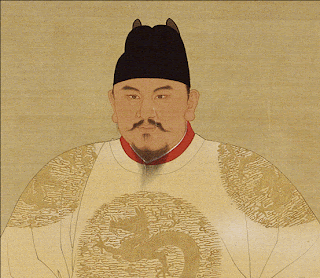Emperor Yongle of the Ming Dynasty just finished building his large tomb, benefiting only himself while hurting his dynasty which he has the duty to protect as long as he lives. His tomb is taking up over 120 square kilometers of land at the foot of Mt. Yan. It took workers four years to finish this big project, wasting the Chinese citizens time. The tomb contained very expensive statues, materials such as silk, Wood, and even porcelain, materials made from the Ming Dynasty citizens sweat and hard work. Emperor Yongle does not have the right as the leader of a big, powerful dynasty to take up time, land, and money on something that will only benefit him. More than 120 square kilometers were taken up with Yongle’s tomb when the population of China around 1400 (building of the tomb began in 1409) was about 65-80 million people. The land if not occupied by the massive tomb would be used for poor Chinese citizens to build homes. It took a total of four years to build the tombs starting 1409, in this year, 1410 the Ming Kotte War began affecting China. Instead of taking care of his country Emperor Yongle spent time building his precious tombs, not helping his dynasty remain strong. Yongle spent money on expensive silk, Wood, and porcelain to put in his tomb with other expensive possessions he had. Emperor Yongle is trying to protect himself and his family after they have pass away, making sure all of them pass safely to heaven. But as the duty of an emperor he is obligated to lead his dynasty into the right direction, keep his people safe, healthy, and fix all problems, but Yongle takes up useful land, money, and time from his dynasty for his personal wanting. Emperor Yongle doesn't have the right to sacrifice his dynasty, making them overall a weak community with the lack of money, time and land. Leaving them vulnerable to any attacking country. All for personal things, things that will only be useful to Yongle after his death. Emperor Yongle’s actions were pointless a smaller tomb wouldn't hurt, as a matter of fact it would help his dynasty, The Ming Dynasty.
 Location: L
Location: L
Location: J
 Location: K
Location: K
 Location: H
Location: H
 Location: G
Location: G

Location: J
